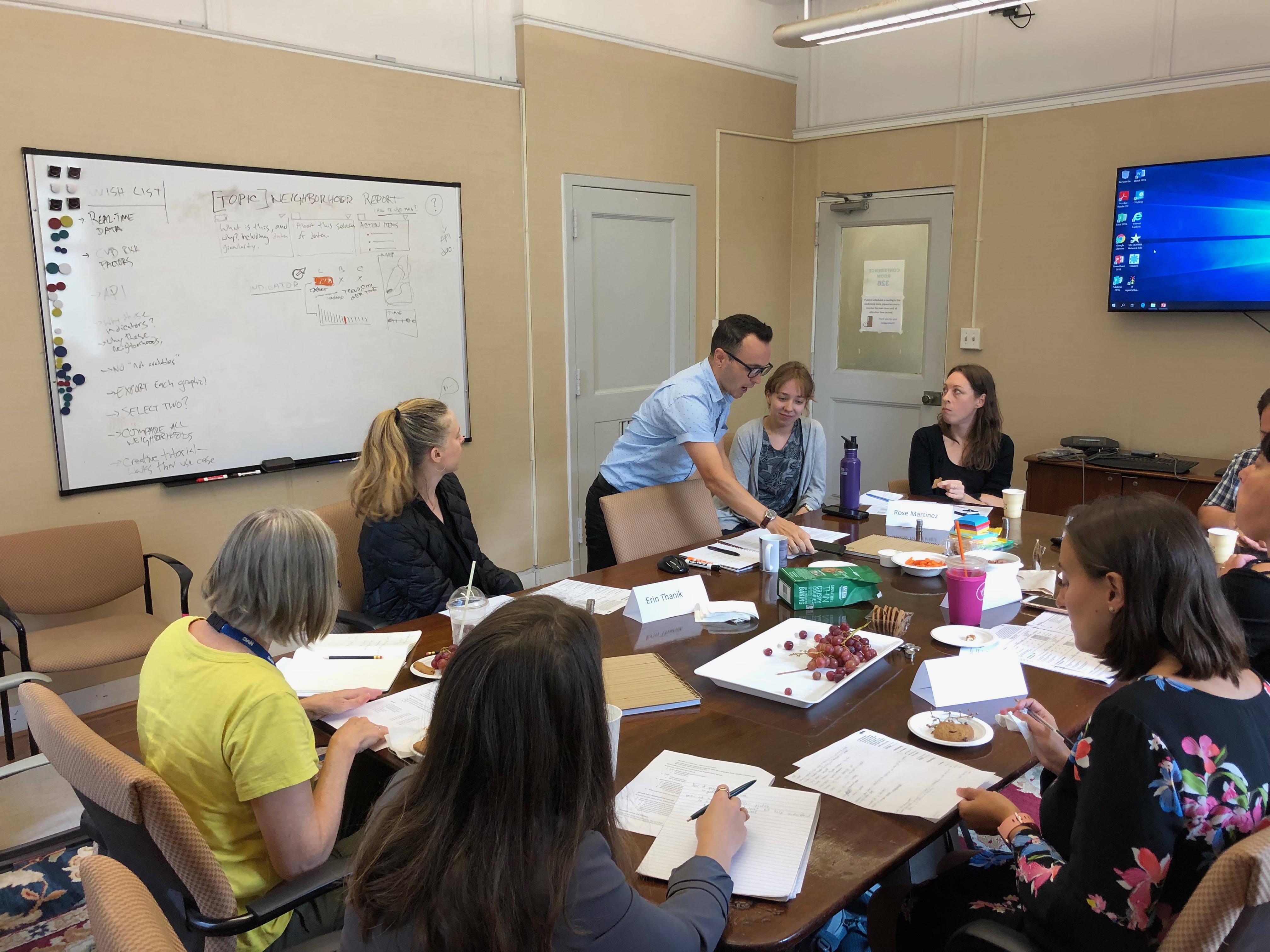Why we're working with you to redesign the data portal

We’re making changes, and we need your help.
A few months ago, when we redesigned the home page of the Environment & Health Data Portal, we wrote that we were working toward “building a system that works: that’s intuitive and makes our information clear and easy-to-find.”
As a government agency, we’re committed to making information available via the web. By doing this well, we hope that people can use this information to change their lives and their communities.
Information: Out of our offices, into your hands
Here at the Health Department, we collect a lot of data. It’s our goal to be transparent with that data, and create tools that people can use to improve health throughout the city. But just putting information on the web doesn’t guarantee that it’s useful.

So, we’re using Civic Service Design to guide our work. Civic Service Design is a practice based on the idea that government services should be:
- Created with the people who use them
- Prototyped and tested for usability
- Accessible to all
- Equitably distributed
- Tested for effectiveness
In short, Civic Service Design means working with our users - you - to design the Portal to best answer your questions with health and environmental data. We want the Portal to be an information service that connects you to the information that you need.
So what are we doing?
Assembling a User Group: We reached out to dozens of contacts who use - or might use - the EH Data Portal and asked them to be a part of a User Group, answer surveys and attend occasional focus groups.
Surveying the group: We delivered a brief survey asking about experiences with the Data Portal and its Neighborhood Reports to help us prioritize changes and improvements.
In-depth interviews. We invited people in for in-depth interviews. We asked them questions about their research workflow, how they search for data, and what they do once they have it. We looked for ways we could provide data and information to make their work easier.
o-design sessions: We invited a group of users to a brainstorming session in which we dug into the Neighborhood Reports, using whiteboards and art supplies, and started thinking about new ways to design them. We considered how to access and present data so that it’s most informative and useful.
Using ongoing feedback to inform design: We’re using new ideas to design the Neighborhood Reports, asking our User Group about them throughout the process. By repeatedly testing our designs with users, we work through an iterative process that continuously improves our product.

Taking an extra step toward you
Putting information out into the world is no guarantee that people can find it, understand it, and use it. We are working to take an extra step to reach our users. We hope to better understand how our information can best support your work, your questions, and ultimately your health.
With this extra preparation, we get a clearer vision for the Portal, and we gain confidence knowing that it will have the most qualified designers - its users. If you’d like to be a part of our User Group and provide input on how our Data Portal works, please contact us.
February 13, 2020